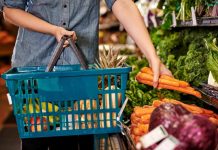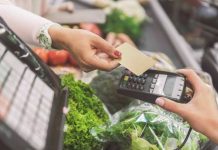
Affording food can be a struggle for many people. Even though food is important and you can’t live without it, many people struggle to afford the cost of groceries. It’s even harder for people who have bigger families. The government understands that some Americans deal with this struggle. That’s why they have programs that may be able to help like The Emergency Food Assistance Program (TEFAP).
What is TEFAP?
TEFAP is an assistance option that can help those in need. This federal program supports individuals by supplementing the diets of those who qualify, such as low-income Americans and elderly Americans. These Americans can get emergency food assistance at no cost!
Yes, you read that right. It is entirely free! The United States Department of Agriculture (USDA) gives 100% USDA foods and administrative funding to states that operate this program. When supplying these resources to states, they are given to state distributing agencies. What’s nice about this program is the foods that the USDA provides are high-quality and nutritious.
Not every state will get the same amount of assistance. Instead, how much food a state receives depends on how many unemployed people and other qualifying individuals living in the state. The states that receive assistance provide food to local agencies. This includes Indian Tribal Organizations and food banks. These agencies distribute the resources to local organizations like food pantries, soup kitchens, etc. These organizations are the ones that can help those in need and serve the public. States may also provide resources to community action agencies who then give food to qualifying households directly.
How Can You Benefit from TEFAP?
TEFAP is a federal program that can provide funds and food to states that participate. These states then provide these resources to those in need. For example, let’s say the government gives food to a local food bank. This local food bank also works with a food pantry where they deliver some of the food they get.
They provide the food they receive through TEFAP to people in soup kitchens or at food pantries. When local organizations receive these resources, individuals in the community can benefit because they can get free food through these places! This means that you could benefit from TEFAP if your local organization provides the food they receive from this program. You should see if there are any local food organizations like a soup kitchen or food pantry that can help members like yourself in your community receive food assistance.
Other Food Assistance Opportunities
Besides TEFAP, there are other federal assistance programs that can help people deal with the cost of groceries. Some of these programs are:
- Supplemental Nutrition Assistance Program (SNAP)
- Special Supplemental Nutrition Program for Women, Infants, and Children (WIC)
- National School Lunch Program (NSLP)
- School Breakfast Program (SBP)
- Special Milk Program (SMP)
Supplemental Nutrition Assistance Program (SNAP)
This is a popular program for Americans in need. SNAP (also known as food stamps) helps those in need through Electronic Benefit Transfer (EBT) cards. An EBT card receives funds every month. These funds can be used at stores that accept them as a form of payment. These funds are meant to be used on groceries. However, not every item qualifies as a necessary grocery. You can only buy groceries like:
- Meat
- Poultry
- Fish
- Fruits
- Vegetables
- Dairy products
- Bread
- Cereal
- Snack foods
- Non-alcoholic beverages
- Seeds and/or plants that produce food for the household to eat
SNAP funds cannot be used on items such as:
- Alcoholic beverages like beer, wine, liquor
- Tobacco products like cigarettes
- Vitamins
- Medicines
- Supplements
- Live animals (except shellfish, fish removed from water, and animals slaughtered before store pick-up)
- Non-food items
How Much Could You Get from SNAP?
It’s important to keep in mind that every state is different when it comes to this assistance program. There will be different eligibility criteria to qualify for this program. However, if you are eligible, the amount you can receive depends on factors like your income level, family size, etc. The USDA provides a chart that shows the maximum monthly amount that qualifying individuals could get from this program (keep in mind this information is for Oct. 1, 2023, through Sept. 30, 2024, and can vary for special cases):
- 1 Person: Maximum is $291
- 2 People: Maximum is $535
- 3 People: Maximum is $766
- 4 People: Maximum is $973
- 5 People: Maximum is $1,155
- 6 People: Maximum is $1,386
- 7 People: Maximum is $1,532
- 8 People: Maximum is $1,751
- Each Additional Person After 8 People: $219
Special Supplemental Nutrition Program for Women, Infants, and Children (WIC)
Some groups of people need more assistance than others. That is why there is WIC. This program can help families by providing federal grants to states. These federal grants go towards supplemental food assistance, health care referrals, and nutrition education for qualifying pregnant women, postpartum women, infants, and children up to five years old that are at nutritional risk.
How Would You Get WIC?
If you want to get support from this program, there are different qualifications you will need to meet like:
- Income Requirements
- Categorical Requirements
- Nutritional Risk Requirements
- Residential Requirements
Even though it is a federal program, states are the ones that provide the assistance. You will want to contact your local or state WIC agency. Your local or state WIC agency can help you with the application process and answer any questions you have about the program, eligibility requirements, etc.
This program is short-term, which means recipients can only get support for one or more certification periods. A certification period is the length of time a recipient can get benefits. However, it varies by application and state, so you will need to confirm your area! It is also important to note that just like other federal assistance opportunities, there may be a waitlist before you can receive your benefits. You will be placed on a waitlist if there are too many people who also want the limited resources available. WIC also operates on a Priority System, meaning you can expect WIC services and benefits to be given first to the people in the most need.
National School Lunch Program
Public schools, nonprofit schools, and residential child care facilities can benefit from this food assistance opportunity. This program gives low or no-cost nutritionally balanced lunches to qualifying children every school day. Millions of children can benefit from this program annually! When children get lunch through school at a reduced price or even no cost, those savings can make a world of difference for families dealing with financial hardship. This program has been around since President Truman signed the National School Lunch Act in 1946.
School Breakfast Program (SBP)
States that operate nonprofit breakfast programs in public schools, non-profit private schools, and residential child care facilities can benefit from this program opportunity and receive reimbursements for the meals they provide. The Food and Nutrition Service provides SBP at the federal level. However, state education agencies are the ones that provide SBP at the state level and local school food authorities operate the program at the local school level. This program helps millions of children and was turned into a permanent program by Congress back in 1975.
Special Milk Program (SMP)
Milk is an important part of growing up. It contains nutrients like calcium that help children develop strong bones! The Special Milk Program (SMP) can help schools that are not part of any other federal meal service program. However, even schools that participate in federal programs like NSL or SBP can participate if they give the milk to children in half-day pre-kindergarten and kindergarten programs. Children must not be able to access other school meal programs to receive milk from SMP!
Other Federal Assistance Programs
Besides food assistance opportunities, there are other federal programs that can help people live more affordable lives in other aspects. These programs can help with housing costs, medical expenses, and more. When people have more support in certain areas of life, they may better handle other areas of life. For example, if a person can spend less money on housing expenses, those funds can be used towards buying groceries instead! Some other federal assistance programs that may be worth a try include:
- Low Income Home Energy Assistance Program (LIHEAP)
- Housing Choice Voucher Program
- Public Housing
- Weatherization Assistance Program (WAP)
- Medicare
- Medicaid
- Supplemental Security Income (SSI)
- Social Security Disability Income (SSDI)
- Children’s Health Insurance Program (CHIP)
Bottom Line
TEFAP is a great assistance option to help local organizations provide food to those in need. However, the program cannot directly benefit a person in need (compared to other programs like SNAP, WIC, etc.). There are both federal food assistance programs to look into as well as other federal programs that may be able to help. You should review your options when trying to find support. Luckily, the applications for these programs are free and if you need any additional information, you can get in touch with your state agency.
















